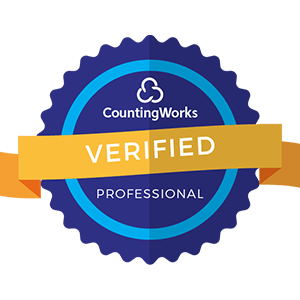
Human Resources (HR) is an industry shaped by what’s happening in the world at large, whether economically, socially, or culturally. This is because HR is, at its core, concerned with people and their relationship to work. The field considers what priorities employees have at a given moment, trends in the workplace, employee engagement tactics, company goals, new technologies that make processes more efficient, and changing laws and regulations.
Global events like a pandemic impact the way people think about work, of course, and HR is still trying to adapt to the changes the last year-plus brought to all industries and countries. What happens next will depend on how HR professionals respond, new solutions and technologies, and the priorities of employees and employers.
This guide will cover what HR looks like today and five of the biggest HR trends driving the industry in 2021 and beyond.
HR deals with many business functions that concern employees, from compliance and hiring to time off and performance reviews. These tasks continue to be updated and informed by trends that will be discussed in detail later. It is first helpful to walk through a few key components of today’s HR departments to understand how trends come about and why certain events shape the industry:
A major part of HR is finding the right talent and overseeing the application and interviewing procedures. HR takes on everything related to hiring, which includes following laws and guidelines and onboarding employees. HR departments are also usually involved in ongoing training initiatives for employees.
Benefits, including insurance, compensation, perks, time off, and the like, are HR’s responsibility to manage and administer. HR teams have varying policies for these areas, and they are usually represented in an employee handbook for easy reference. HR also oversees the self-service systems that employees can use to manage their benefits.
HR staff is also responsible for general employee management, which may include evaluations, goal setting, conflict resolution, and performance measurement. HR also steps in to help with professional development programs based on a company’s goals.
These are the primary functions of a typical HR department. These staff members may also be closely involved in areas like communication, business structuring, process design, staff mobility, and technology integration.
.jpg?width=900&name=Untitled%20design%20(23).jpg)
The role of HR can change based on what’s going on within an industry or worldwide. This year is certainly no exception, as major events such as the pandemic have changed how people work and opened the door for innovations. These are the five biggest HR trends in 2021:
HR departments are prioritizing compassion and empathy more than ever. This is largely in response to all the struggles employees are experiencing because of COVID-19, whether job changes or losses, business closures, loss of loved ones, severe illness, or mental health crises. HR exists to support people, so staff should consider what employees are going through in and outside of the workplace.
Companies of all shapes and sizes have gone at least partially remote since March 2020. One estimate from Global Workplace Analytics indicates that 69% of American employees worked from home at the pandemic’s peak, and millions of employees still work at home at least half-time. Both employees and employers have seen benefits, from cost savings and better work-life balance to productivity boosts.
HR teams are preparing for a future in which remote work is temporary and here to stay in some capacity. Companies may implement hybrid work arrangements or staggered work schedules more and more, for example.
Companies already prioritized digital transformation before the pandemic, and now those goals have been accelerated. Remote work means employees need ways to access company systems and communicate via video from anywhere they have an internet connection, and that kind of flexibility and collaboration requires a dependence on the cloud. This means HR software and systems, including time tracking, payroll, and benefits management tools, are also moving to the cloud.
The way HR teams and managers are hiring these days is pretty different. Everything must be done virtually now instead of the traditional trajectory of application, phone interview, and in-person interview. New hires may never set foot in the office or meet their coworkers in person, or at least not for a while.
This means embracing the technologies that make these interactions possible, but it also means companies can hire workers across the nation or globe, and not just those who live in their geographical office location. Hiring remote workers opens the door to a much bigger talent pool and makes jobs more accessible for many.
Engaging and satisfying employees looks a lot different than it did two years ago. Company leaders no longer have the option for big office meetings or company outings they once had. Workers can’t just walk a few feet to engage with their peers in face-to-face interactions.
HR staff is tasked with implementing new engagement techniques, like more regular video check-ins, reviews and evaluations where employees can share feedback and new priorities for work-life balance. Activities need to be planned over video conferencing or not at all, which can make employees feel more isolated. HR teams are thus tasked with pivoting to find new and creative ways to keep employees engaged and connected.
Many of these trends were already underway before the pandemic, but some have emerged to deal with changes workplaces are experiencing on a global scale. HR departments have had to do a lot of the behind-the-scenes work to ensure that remote or transformed offices are still supporting employees and that systems meet the moment effectively.
The world of HR continues to change, and you need the best solutions out there to keep up. This may mean bundling your services for easier employee access and management, or streamlining functions like ADP payroll management with the right software implementation.
Ignite HCM is here to help. We work with you to optimize your ADP payroll solutions so you can focus more on supporting employees and adapting to the latest trends. Contact Ignite HCM for help with your payroll management and HR optimization needs.


